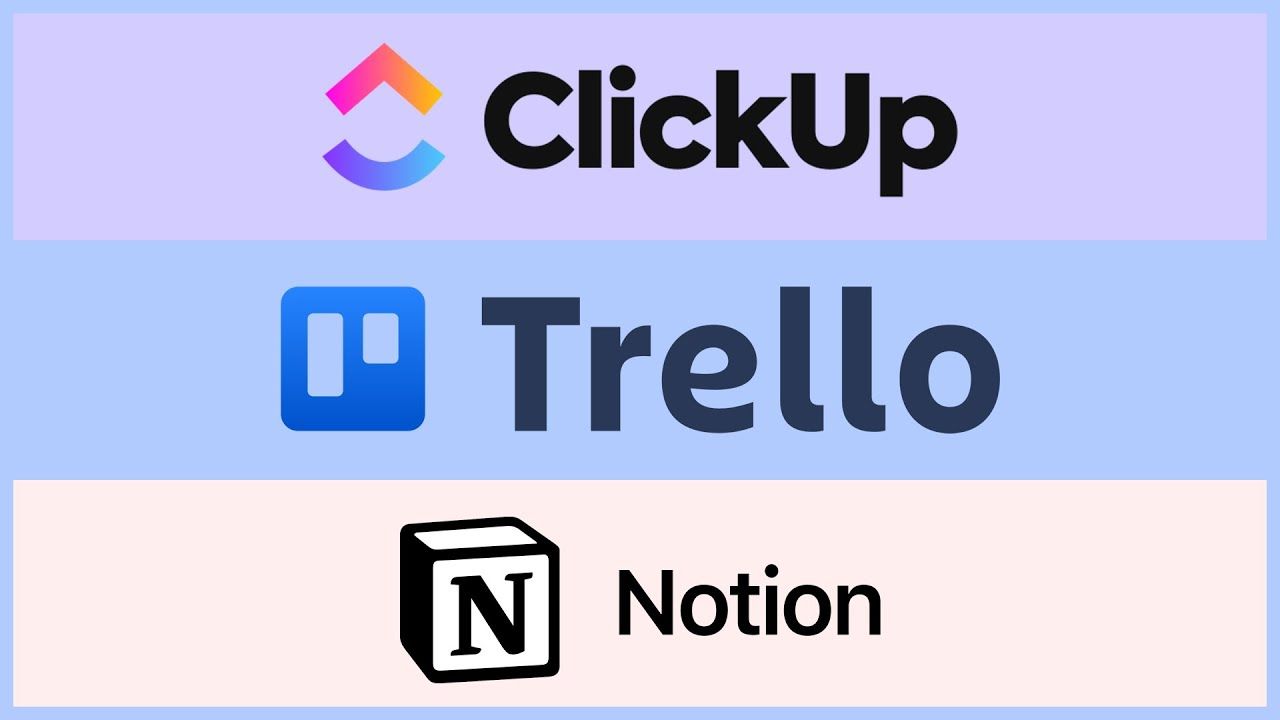

In today’s fast-paced work environment, managing your time and tasks effectively is crucial for success. Let’s explore this topic in more detail with Ping Pong Go below. As we delve into the world of productivity tools, we’ll discover how platforms like Notion, ClickUp, and Trello can revolutionize the way you manage your work day, helping you stay focused, organized, and efficient.
In an era where the lines between work and personal life are increasingly blurred, especially with the rise of remote and hybrid work models, digital productivity tools have become indispensable. These platforms offer a centralized hub for task management, project planning, and collaboration, addressing the core challenges faced by professionals across various industries.
Notion, ClickUp, and Trello stand out as some of the most popular and versatile productivity tools available today. Each offers unique features and functionalities that cater to different work styles and organizational needs. By leveraging these tools effectively, you can transform your work day from a chaotic jumble of tasks and deadlines into a well-orchestrated symphony of productivity.
The beauty of these digital platforms lies in their flexibility and customizability. Whether you’re a freelancer juggling multiple clients, a team leader coordinating complex projects, or an individual looking to streamline your personal tasks, these tools can be tailored to fit your specific requirements. They not only help in managing tasks but also in cultivating better work habits, reducing stress, and fostering a more balanced approach to work.
Notion has gained immense popularity for its versatility and ability to serve as an all-encompassing workspace. It’s more than just a task management tool; it’s a digital ecosystem where you can create, organize, and collaborate on virtually any type of content.
To harness the full potential of Notion in managing your work day, start by creating a personalized dashboard. This dashboard can serve as your command center, displaying your most important tasks, upcoming deadlines, and key metrics at a glance. Utilize Notion’s database feature to create custom views for different aspects of your work, such as projects, meetings, and personal goals.
One of Notion’s standout features is its ability to link and relate different pieces of information. For instance, you can create a project database that links to individual task pages, meeting notes, and relevant documents. This interconnectedness allows for a more holistic view of your work, ensuring that no detail falls through the cracks.
For those who follow specific productivity methodologies, Notion can be adapted to support various systems. For example, you can implement the GTD (Getting Things Done) method by creating separate databases for your inbox, next actions, projects, and waiting for items. Similarly, the Eisenhower Matrix can be recreated using a database with custom properties for urgency and importance.
To make the most of Notion for time management, consider creating a weekly or daily planner template. This template can include sections for your most important tasks, scheduled meetings, and time blocks for focused work. By consistently using and updating this planner, you’ll develop a clearer picture of how you’re spending your time and where you might need to make adjustments.
Notion’s flexibility also allows for the implementation of time-based working methods like the Pomodoro Technique. You can create a simple timer database to track your work sessions and breaks, helping you maintain focus and avoid burnout. Additionally, use Notion’s reminder feature to set alerts for important deadlines or to prompt you to take regular breaks throughout the day.
Read more: Top 10 Productivity Apps Every Professional Should Try
ClickUp positions itself as the ultimate productivity platform, offering a wide array of features designed to streamline task and project management. Its strength lies in its ability to provide a clear overview of all your work while also allowing for detailed task tracking and collaboration.
To effectively use ClickUp in managing your work day, start by setting up your workspace to reflect your work structure. Create spaces for different areas of your work life, such as client projects, personal tasks, and team collaborations. Within each space, you can create lists, boards, or calendars to organize your tasks in a way that best suits your workflow.
ClickUp’s multi-view feature is particularly useful for adapting to different work scenarios. For instance, you might prefer a list view for your daily tasks, a board view for project management, and a calendar view for scheduling. This flexibility allows you to switch between different perspectives of your work effortlessly, enhancing your ability to prioritize and manage your time effectively.
One of ClickUp’s standout features is its robust goal-setting system. By setting clear, measurable goals and linking them to your tasks and projects, you can maintain a strong focus on your most important objectives. This alignment between daily tasks and long-term goals can significantly boost your motivation and productivity.
To combat procrastination and enhance focus, ClickUp offers built-in time tracking and reporting features. Use these to monitor how you’re spending your time and identify areas where you might be losing productivity. The time tracking feature can also be used in conjunction with the Pomodoro Technique, allowing you to work in focused bursts followed by short breaks.
ClickUp’s customizable dashboards can be a game-changer for managing your work day. Create a dashboard that displays your high-priority tasks, upcoming deadlines, and key metrics. This at-a-glance view of your work can help you stay on top of your commitments and make informed decisions about how to allocate your time and energy.
Trello’s strength lies in its simplicity and visual approach to task management. Based on the Kanban system, Trello uses boards, lists, and cards to represent your work in a highly visual and intuitive manner. This makes it an excellent choice for those who prefer a more straightforward, less feature-heavy approach to managing their work day.
To effectively use Trello, start by creating a board that represents your work day or work week. Within this board, create lists that represent different stages of your workflow, such as “To Do,” “In Progress,” and “Done.” You can also create lists for different categories of tasks, such as “High Priority,” “Meetings,” and “Personal Tasks.”
Trello’s card system allows for a high degree of customization. Each card can represent a task or project and can include detailed descriptions, checklists, due dates, and attachments. This flexibility allows you to capture all the necessary information for each task in one place, reducing the need to switch between different tools or platforms.
One of Trello’s most powerful features is its ability to automate routine tasks through its Butler automation tool. Set up rules to automatically move cards between lists, set due dates, or assign labels based on certain triggers. This can significantly reduce the time spent on administrative tasks, allowing you to focus more on actual work.
Trello’s Power-Ups feature allows you to extend the functionality of your boards. For instance, the Calendar Power-Up can provide a calendar view of your tasks, helping you visualize your workload over time. The Custom Fields Power-Up allows you to add extra data to your cards, which can be useful for implementing systems like the Eisenhower Matrix directly within Trello.
To maintain focus and avoid overwhelm, consider using Trello’s filtering and search functions. These allow you to quickly find specific tasks or view only the cards that are relevant to your current focus. This can be particularly helpful when you need to concentrate on high-priority items or when you’re looking for a specific piece of information among numerous tasks.
Read more: How to Create a Workspace That Maximizes Productivity
Regardless of which tool you choose – Notion, ClickUp, or Trello – the key to success lies in how well you integrate it into your daily routine. Here are some strategies to help you make the most of these productivity platforms:
Start your day with a review: Begin each workday by reviewing your tasks and priorities in your chosen tool. This helps set the tone for the day and ensures you’re focused on what’s most important.
Use time blocking: Allocate specific time blocks for different types of tasks or projects. This can help you maintain focus and avoid context switching, which can be a major productivity killer.